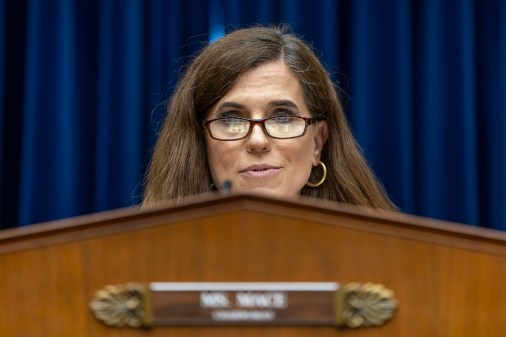AI executive order will face challenges with talent pipeline, experts say

Artificial intelligence experts who are supportive of the White House’s recent executive order on AI expressed significant concerns Wednesday about the ability of federal agencies to meet the order’s aggressive deadlines, particularly due to a major shortage of tech talent and the reality that agency leaders are already spread too thin.
After a House Oversight Subcommittee hearing on the White House’s AI policy, key experts on the technology from academia, industry and nonprofits highlighted several challenges surrounding implementation of the policy document signed by President Joe Biden in October.
“Part of the recognition here that everyone concedes is, there’s not enough AI talent within agencies,” Daniel Ho, associate director of the Stanford Institute for Human-Centered Artificial Intelligence, told FedScoop. “And all you’re doing is slapping this title of [chief AI officer] onto an existing officer like a CIO or CTO, and that may not bring as much talent into the agency as you would like.”
Ho, who serves on the Biden administration’s National Artificial Intelligence Advisory Committee, added that chief technology and chief information officers will likely not have the time and attention to handle the hundreds of items that the White House EO and the corresponding OMB AI memo require, noting that agency tech leaders can’t spend just 5 percent of their time as chief AI officers.
The wide-ranging executive order, which aims to tackle everything from AI privacy risks to federal procurement, calls on several agencies to take on new responsibilities related to artificial intelligence.
The order also addresses new strategies for federal use of the technology, including the issuing of guidance for agency deployment, helping agencies access AI systems through more efficient and less expensive contracting, and hiring more AI professionals within the government.
As part of that recruitment effort, the White House’s AI.gov website is set to reveal a new AI-related jobs portal for prospective federal workers. The Office of Personnel Management, U.S. Digital Service, U.S. Digital Corps and Presidential Innovation Fellowship are supposed to lead this hiring initiative.
Nevertheless, some tech industry executives are concerned that AI innovations will not be fully utilized within the government, and said that there needs to be more funding to manage the risks around AI.
“Government has very thorny problems that are specific to government use, and we need to be able to leverage the AI,” Ross Nodurft, executive director of tech trade group Alliance for Digital Innovation, told FedScoop. “We need to make sure that the AI executive order and the OMB memo have very clear ways of taking advantage of current AI processes that are already set up so that it’s easier for agencies to consume that technology.”
Although the AI executive order has largely received a warm welcome from AI experts and government leaders, a handful of tech industry associations have said the EO is too confusing, too broad and could potentially stifle innovation.
“I also think that there needs to be continued funding for some of the agencies, whether it’s federal entities doing the oversight, or federal entities that are buying and consuming the technology,” added Nodurft, the former chief of OMB’s cyber team. “We have to focus on funding for us to be successful in managing the risks associated with AI.”
AI academic scholars and lawyers such as Ho say that pouring resources into upskilling the current federal workforce and more fully utilizing the Intergovernmental Personnel Act would be productive ways of making it easier to implement the AI executive order.
“More training of the existing federal workforce when it comes to AI would be good,” Ho said. “The Intergovernmental Personnel Act, I think, is a really good model that a number of agencies have taken advantage of. … You can have folks from qualified nonprofits or academic institutions and onboard them to serve in the government in this kind of a capacity.”
Caroline Nihill contributed to this article.




